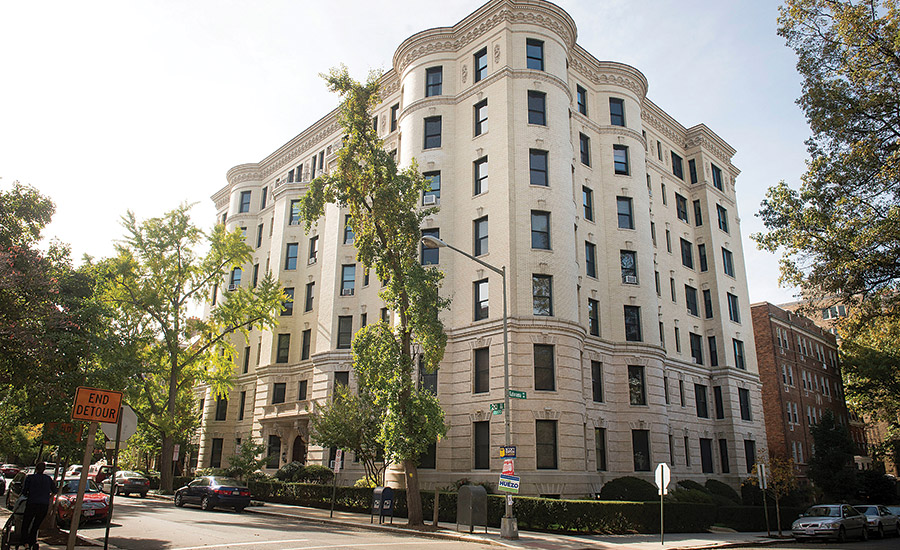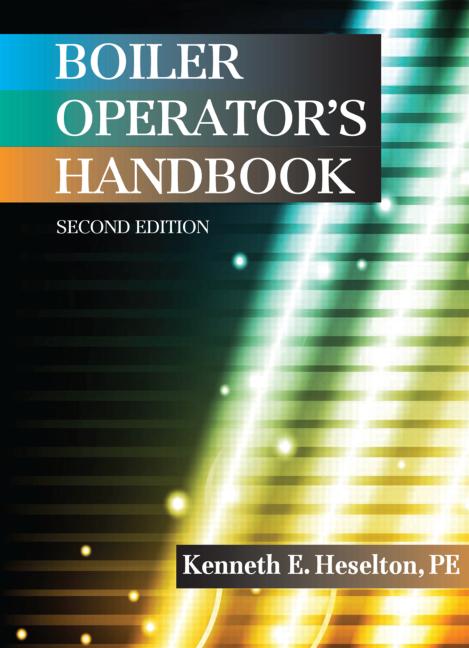Built in 1901, the seven-story Mendota is Washington’s oldest intact luxury apartment building. One historic feature of the building is the original heating system, which consisted of a coal-fired boiler that’s still in place but has long been disconnected. The Mendota is heated by a one-pipe steam system connected to column-style cast iron radiators.
Over the years, the coal boiler was abandoned and a gas steam boiler was installed. But that system, after many years in operation, had become less reliable.
“We allocated approximately $75,000 annually for natural gas, and this expense was a huge portion of our budget,” said Jim Wood, head of the building and grounds committee for the Mendota board of directors. “Also, many tenants complained it was either too warm — requiring them to open windows — or that they didn’t have enough heat. We had to do better.”
Dan Foley, president and owner of Foley Mechanical, was hired to remedy the situation.
“When we started working with Mendota, a 40-year old steam boiler provided heat,” said Foley. “Upon inspection, we noticed the boiler fired all day long and never shut off.”
Foley also noted that the main venting system was not appropriate for the two 6-in steel mains that circled the basement of the facility. The boiler would flood on a regular basis, and the condensate would lag as it percolated through the clogged wet returns.
“When the condensate would finally return, the boiler would flood, which required a service call,” said Foley. “Water continuously drained from the boiler as fresh water was added, causing the boiler to disintegrate from the inside out.”
Foley and Wood decided first to make incremental improvements, including replacing multiple ribbon burners that had rusted and replacing the boiler relief valve and safety controls. Next, the team rebuilt the main venting system.
“The vents were undersized and the two mains were not balanced,” said Foley. “We had a welder cut in two 1-in thread-o-lets into the end of the steam mains, and then we built vent headers on each main.”
Another step was removing an old electro-mechanical control that had not functioned properly in years.
All of the boiler system improvements had a fairly dramatic effect. The boiler heated the building more evenly and fuel expenses decreased to between $55,000 and $60,000 annually. However, Foley believed there still was room for improvement.
When service calls began to become a weekly occurrence and most of the operational parts of the boiler were replaced, building management decided it was time to consider replacement.
Foley prescribed a new boiler; re-piping the header; and replacement of the rotted, clogged wet returns.
“I submitted a six-figure proposal, and at first the board balked at the price,” said Foley. “When I suggested they review what they paid in fuel over the past five years and add in the service calls and tenant complaints, they quickly came around.”
Foley recommended installing a Weil-McLain LGB-20 atmospheric draft steam boiler at 2.5 million Btus. The boiler was sized to the connected radiation using a 1.5 pick-up factor. The header was re-piped to manufacturer specifications.
“Before we removed the old boiler, we conducted a system overhaul to optimize the distribution piping, vents, and the radiators in every room,” said Wood. “We then installed new main line steam vents, both at the beginning and the end of the line, checked all the mud legs, and replaced the near boiler piping because it had been clogged.
“Our preparatory work and due diligence ensured the whole system would work much more efficiently and we could slip the new unit right in,” Wood added.
After the new boiler was installed, the team cleaned the system with steam cleaner and ran it for several weeks to flush out all of the sediments. After flushing the boiler and wet returns, Foley skimmed the water line until it ran clear.
Loop seals also were clogged with sediment. Foley and team flushed out each loop seal with water, which allowed the condensate to drain and the steam to flow freely.
With the new boiler optimized several benefits were realized. Radiators that had not heated in years were hot. Steam circled the mains quickly and the risers received steam at the same time.
“We actually installed a couple of dozen additional radiators that had been removed with the previous system because it had been run at such a high level that the building was overheating in some areas,” said Wood.
And Wood likes the fact that he doesn’t have to change the operational parameters of the boiler throughout the year.
“The controls are such that we don’t make adjustments at all,” said Wood. “The system learns and fine-tunes settings as needed.”
One of the most significant benefits was the energy savings. Fuel costs decreased to about $30,000 annually — a reduction of more than 40% from gas bills years earlier. ES






